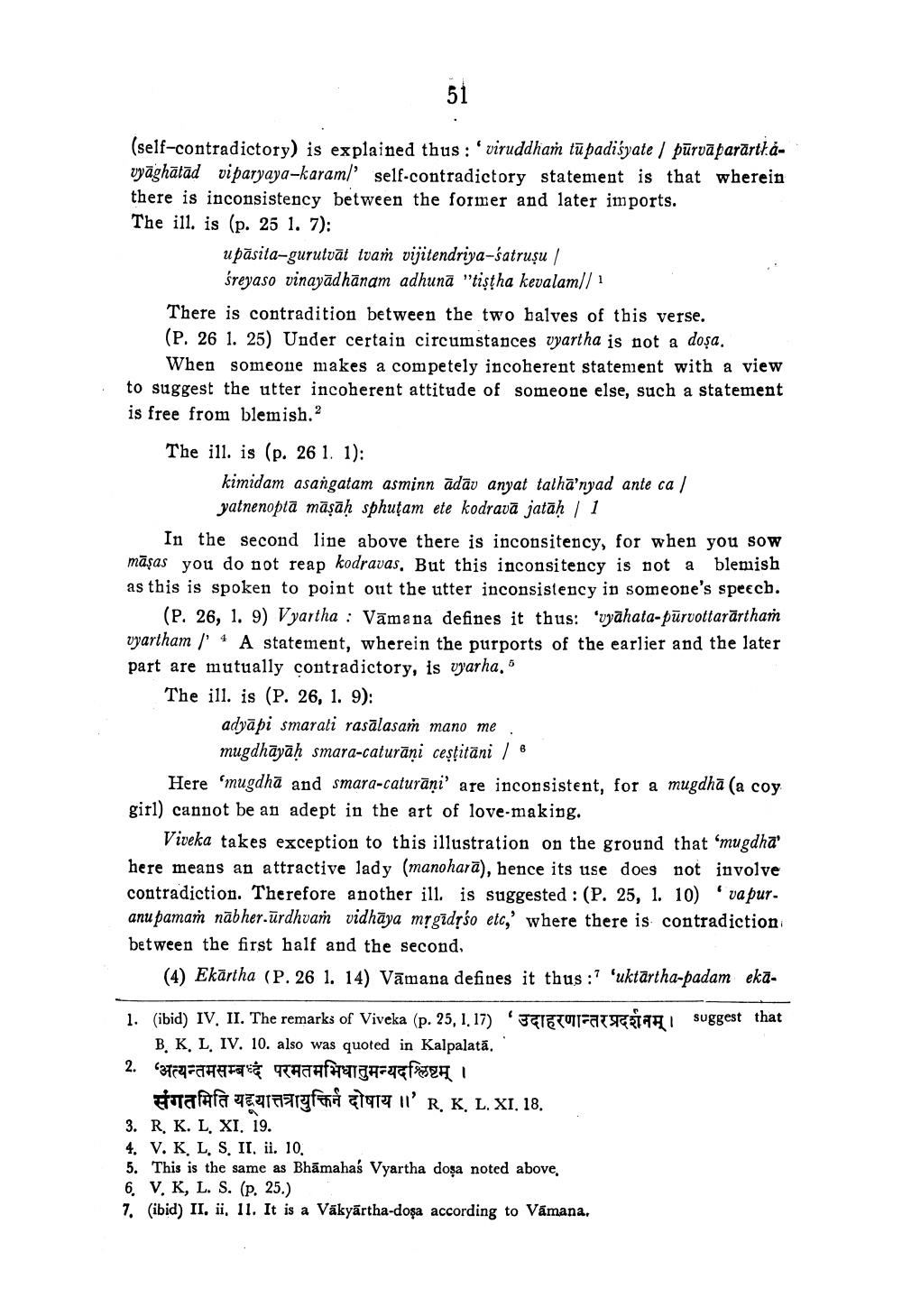________________ (self-contradictory) is explained thus :'viruddham tu padisyate / purvaparartlavyaghatad viparyaya-karam/ self-contradictory statement is that wherein there is inconsistency between the former and later imports. The ill. is (p. 25 1. 7): upasita-gurutvat tvam vijitendriya-satrusu / sreyaso vinayadhanam adhuna "tistha kevalam// 1 There is contradition between the two halves of this verse. (P. 26 1. 25) Under certain circumstances vyartha is not a dosa. When someone makes a competely incoherent statement with a view to suggest the utter incoherent attitude of someone else, such a statement is free from blemish.? The ill. is (p. 26 1. 1): kimidam asangatam asminn adav anyat tatha'nyad ante ca / yatnenopta masah sphutam ete kodrava jatah / 1 In the second line above there is inconsitency, for when you sow masas you do not reap kodravas. But this inconsitency is not a blemish as this is spoken to point out the utter inconsistency in someone's speech. (P. 26, 1. 9) Vyartha : Vamana defines it thus: vyahata-purvottararthai vyartham / 4 A statement, wherein the purports of the earlier and the later part are mutually contradictory, is wyarha. The ill. is (P. 26, 1. 9): adyapi smarati rasalasam mano me mugdhayah smara-caturani cestitani / 8 Here 'mugdha and smara-caturani' are inconsistent, for a mugdha (a coy girl) cannot be an adept in the art of love-making. Viveka takes exception to this illustration on the ground that "mugdha' here means an attractive lady (manohara), hence its use does not involve contradiction. Therefore another ill. is suggested : (P. 25, 1. 10) va puranu pamam nabher.urdhvam vidhaya migidsso etc,' where there is contradiction between the first half and the second, (4) Ekartha (P. 26 1. 14) Vamana defines it thus:7 'uktartha-padam eka 1. (ibid) IV. II. The remarks of Viveka (p. 25, 1.17) JCIETOTFATTARI suggest that B.K L IV. 10. also was quoted in Kalpalata. 2. 374para PATATIZ FUNZI afara qaraargfa alla II' R. K. L. XI. 18. 3. R. K. L. XI. 19. 4. V. K L. S. II. ii. 10. 5. This is the same as Bhamahas Vyartha dosa noted above, 6. V. K, L. S. (p. 25.) 7. (ibid) II, ii, 11. It is a Vakyartha-dosa according to Vamana,




